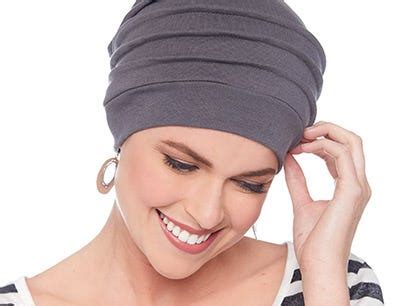Cancer treatment can take a toll on your physical appearance, including your hair. Head covers can provide comfort, support, and a sense of normalcy for cancer patients during and after treatment.

Types of Head Covers
There are various types of head covers available to suit different preferences and needs:
- Hats: Beanies, baseball caps, and sun hats offer warmth and protection from the elements.
- Scarves: Soft and versatile, scarves can be worn in multiple ways to conceal hair loss.
- Turbans: Pre-tied or self-tie turbans provide a comfortable and stylish option.
- Wigs: Made from human hair or synthetic fibers, wigs offer a realistic and natural appearance.
- Scalp cooling caps: Reduce hair loss by constricting blood vessels in the scalp during chemotherapy.
Choosing the Right Head Cover
Selecting the best head cover depends on several factors:
- Comfort: It should be made of soft, breathable fabrics that won’t irritate your scalp.
- Style: Choose a head cover that aligns with your personal taste and fits your lifestyle.
- Hair loss: Different head covers provide varying levels of coverage for different stages of hair loss.
- Budget: Head covers can range in price, so consider your financial situation.
Benefits of Head Covers
Beyond providing a physical barrier, head covers offer numerous benefits for cancer patients:
- Emotional Support: They can boost confidence, provide comfort, and reduce anxiety.
- Practical Protection: Shield your head from cold, sun, and wind.
- Fashionable Accessory: Head covers can complement outfits and express your individuality.
- Hair Loss Concealment: Help minimize the impact of hair loss on your appearance.
Pain Points and Motivations
Cancer patients often face pain points related to head covers:
- Discomfort: Some head covers can be itchy or uncomfortable, especially on sensitive scalps.
- Cost: Wigs and scalp cooling caps can be expensive, creating financial burdens.
- Social Stigma: Head covers may draw unwanted attention or judgment.
Motivations for using head covers include:
- Reclaiming Control: Head covers empower patients by offering a sense of choice and control over their appearance.
- Maintaining Identity: Help preserve a sense of self during physical changes.
- Reducing Stress: Minimize the anxiety and self-consciousness associated with hair loss.
Pros and Cons
Consider the advantages and disadvantages of different types of head covers:
| Head Cover | Pros | Cons |
|---|---|---|
| Hats | Inexpensive, comfortable, easy to wear | Limited coverage, may not be suitable for all weather conditions |
| Scarves | Versatile, stylish, can be worn in multiple ways | May be less secure, can require frequent adjustment |
| Turbans | Comfortable, provide full coverage, available in various styles | Can be bulky, may not be suitable for active lifestyles |
| Wigs | Natural appearance, boosts confidence | Expensive, require maintenance, may not be comfortable for extended wear |
| Scalp Cooling Caps | Reduce hair loss, comfortable | Expensive, may not be effective for all patients, can cause side effects |
FAQs
1. When should I start wearing a head cover?
Start wearing a head cover whenever you feel it provides comfort or support.
2. How often should I wash my head cover?
Follow the manufacturer’s instructions. Generally, wash hats and turbans weekly and wigs every 2-4 weeks.
3. Can I wear a head cover in public?
Yes, head covers are socially acceptable and can help you feel more confident.
4. Are head covers covered by insurance?
Some insurance plans cover the cost of wigs and scalp cooling caps. Check with your provider for details.
5. How can I customize my head cover?
Embellish hats with ribbons or scarves, add decorative pins to turbans, or choose wigs in colors that match your natural hair.
6. What resources are available for cancer patients who need head covers?
- American Cancer Society
- CancerCare
- Look Good Feel Better
7. How can I cope with the emotional impact of wearing a head cover?
Talk to a therapist or support group, connect with other cancer patients, and practice self-care.
8. What new innovations are there in head cover technology?
- Breathable, moisture-wicking fabrics
- Scalp cooling caps with temperature control
- Wigs that mimic the texture and movement of natural hair
Conclusion
Head covers empower cancer patients by providing comfort, support, and a sense of normalcy. Choose the type of head cover that best meets your individual needs, and don’t hesitate to seek resources if needed. Remember, you are not alone, and head covers can help you navigate this journey with confidence and dignity.
